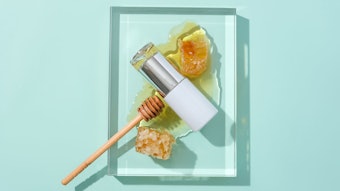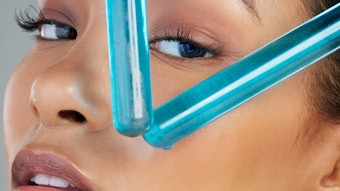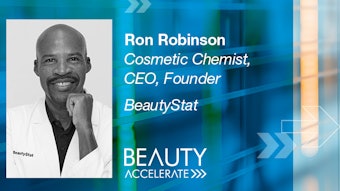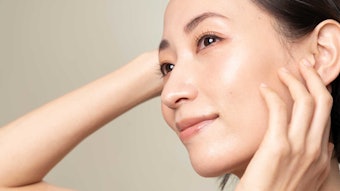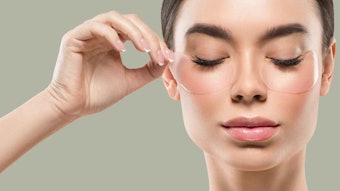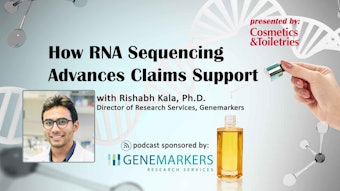
Editor's note: The "Words from Wiechers" series considers the lessons our industry can learn from the late Johann Wiechers, Ph.D. He was an adviser, colleague and leader in the industry until his unexpected passing. Presenting Wiechers's insights is Tony O'Lenick.
Wiechers has consistently said, 'We as cosmetic scientists should not only perform proper science, we should also continuously communicate our results properly and correctly, and in the right context.'
In Chapter 8 of his book, Memories of a Cosmetically Disturbed Mind, he explains further:
"Exactly on the first day of in-cosmetics, the Danish government decided to take all products containing three specific organic sun filters off the market because of their claimed oestrogenicity. This decision was based on the outcome of a study by Margret Schlumpf, Ph.D., et al., of the Institute of Pharmacology and Toxicology of the University of Zürich, Switzerland. Fate had it that Schlumpf herself was also in Düsseldorf, where in-cosmetics was taking place, to give a lecture on the very same subject.
"In short, as I'm sure you've heard before, she concluded that 4-methylbenzylidene camphor (4-MBC), ethylhexylmethoxycinnamate (EHMC) and benzophenone-3 (BP-3) had oestrogenic activity. In a series of experiments, she first showed that four out of six commonly used UV filters had a stimulatory effect on the proliferation of MCF-7 breast cancer cells. These four filters were subsequently investigated in the uterotrophic assay, which demonstrated that the three above-mentioned sun filters were, in their opinion, oestrogenic.
"It is good that such investigations are performed. After all, a prime characteristic of cosmetics is that they have to be safe under known and reasonably foreseeable conditions of use. Why, then, am I writing about it? I would like to discuss the context in which we place our scientific findings.
"Schlumpf started her presentation with the statement that organic sun filters were now found in freshwater fish. Moreover, they were now also found in breast milk. Combining that with the proclaimed oestrogenic activity of the sun filters, she ended her presentation with the question to the audience: 'Is that what you would like to give to your baby?' Clearly, an attention-seeking finalizing statement, directed at the public at large, not the scientific audience gathered in Düsseldorf.
'We have lived in ages of aristocracy, plutocracy and democracy. Today, we seem to be living in the era of mediocracy. Let’s be careful.'
"The general press got hold of her findings but interpreted the statement 'enhanced proliferation of MCF-7 breast cancer cells' as 'sun filters cause breast cancer.' Of course, such a statement makes newspapers sell, and it could be found in a large font on many covers of magazines and newspapers.
"I did my own calculations to verify the relevance of all this work in terms of exposure and dosage. When I extrapolate the uterotrophic experiment (where the authors let rats swim in solutions of the sun filter under study) to humans, we would have to ingest 70 grams of EHMC every day. Assuming a concentration of 1% UV filter in a 100 mL tube, this would correspond to the amount of sun filter available in 70 tubes on a daily basis. Via percutaneous absorption, where levels are seldom above 1%, this means that a daily usage of 7,000 tubes would be required to achieve the same loading. But 7,000 tubes, on the other hand, may just fill a bathtub to let us swim in UV filter!
"A lesson from all this is that we as cosmetic scientists should not only perform proper science, we should also continuously communicate our results properly and correctly and in the right context to avoid situations like this sun filter scare from happening. We have lived in ages of aristocracy (power to the nobility), plutocracy (power to the rich) and democracy (power to the people). Today, we seem to be living in the era of mediocracy. Let’s be careful. This is only a few letters away from mediocrity, and we’ve all seen spelling mistakes in newspapers. Let’s do proper science and communicate it properly and in the right context, too."
This article was originally published in 2001 (19 years ago). It defines the challenge of making science understandable to non-scientists, media and customers. What has changed and gotten far more complicated is the introduction of massive amounts of information on the internet.
None of the information provided is peer-reviewed, and much of the information provided is incorrect. I even remember reading a post credited to a dermatologist saying that "one should not use sodium lauryl ether sulfate since it has ether in it and could potentially make you sleep!" I’m not sure how or who should be responding to incorrect science presented on the internet but it does hurt out industry.
Wiechers was completely correct in saying, "We as cosmetic scientists should not only perform proper science, we should also continuously communicate our results properly and correctly, and in the right context."


